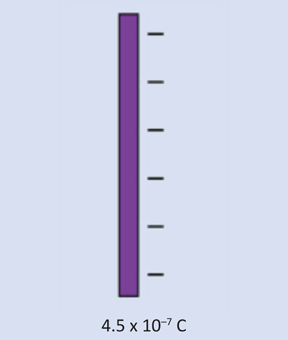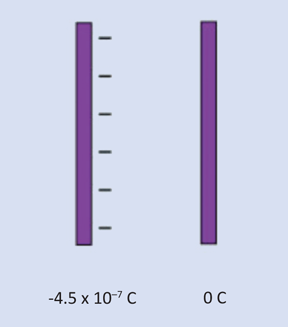Associate Professor Neils Jonassen authored a bi-monthly static column that appeared in Compliance Engineering Magazine. The series explored charging, ionization, explosions, and other ESD related topics. The ESD Association, working with IN Compliance Magazine is re-publishing this series as the articles offer timeless insight into the field of electrostatics.
Professor Jonassen was a member of the ESD Association from 1983-2006. He received the ESD Association Outstanding Contribution Award in 1989 and authored technical papers, books and technical reports. He is remembered for his contributions to the understanding of Electrostatic control, and in his memory we reprise “Mr. Static”.
~ The ESD Association
Reprinted with permission from: Compliance Engineering Magazine, Mr. Static Column Copyright © UBM Cannon
In 1795, Charles-Augustin de Coulomb observed that an insulated charged body exposed to atmospheric air would gradually lose its charge. But because his contemporaries did not appreciate the importance of his observation, another hundred years passed before it was realized, with the discovery of atmospheric ions, that atmospheric air has a certain conductivity.
Although Coulomb’s observation was very important, his formulation was wrong. In fact, charges don’t disappear. Like Ian Fleming’s diamonds, they are forever. Once you’ve placed a charge on a body, there’s no way you can remove it again.
Admittedly, I have, for the sake of the argument, made this statement slightly too strong. There is one exception: If you have a conductor, negatively charged, and the conductor is connected to ground by a metallic wire, then the excess of electrons will bleed away through the wire. But that’s the only exception.
In all other cases, what we call electrostatic decay or discharge, where charges seem to disappear from a charged body, are processes where charge carriers with opposite charges are attracted through the surrounding medium.
Examples
Let’s clarify this complex explanation by looking at an example in more detail. Suppose you have a positively charged plastic box. This means that, one way or another, you have removed electrons from some of the molecules on the surface of the box. We assume that the box is made of an insulative material and that, consequently, no charge-movement is possible along the surface or through the bulk of the box material. If now the surrounding medium—normally air—contains ions, the negative ones will be attracted to the box and plate out on the surface as long as there is a net field directed away from the surface.
But what happens to the ions once they have plated out on the surface? Well, we don’t know. First of all, it’s rather unlikely that each ion lands directly on top of a molecule that has lost one or more electrons. And even if it does, why should the electronegative oxygen molecule in the core of the negative ion cluster give up its extra electron to the apparently electropositive plastic molecule of the box material?
But let me describe a little experiment that demonstrates my point. In Figure 1 is shown a sheet of plastic placed on an insulated metal plate connected to an electrometer in the charge-measuring mode. The plastic was charged negatively by being rubbed by my remaining piece of Kratzenstein’s cat (see “Ben Was Not Alone,” Compliance Engineering, January/February 1998). The sheet was placed on the metal plate with the charged side in contact with the metal; a total charge of –4.5 x 10–7 C was read on the electrometer. (The negative signs of the charges are shown on the top of the plastic to make the figure clearer, but it actually doesn’t matter.) After 24 hours the sheet was removed from the metal plate, and the charge was remeasured to –4.4 x 10–7 C.

Figure 1: A plastic sheet placed on an insulated metal plate is connected to an electrometer in charge-measuring mode.
Here was a plastic surface where a number of molecules had received one or more extra electrons, in close contact with a metal in which electrons are (almost) free to move, and still hardly any of the charged molecules had been neutralized. The electrons were not able to cross the border between the plastic and the metal, even over a prolonged period. What little neutralization that did happen was probably due to positive air ions plating out on the back side of the plastic.
But let’s carry a similar experiment a little further. In Figure 2 is shown a sheet of plastic, again charged to a total of –4.5 x 10–7 C. (In this and the following experiments, the charge on the plastic sheets was measured by lowering the sheets in a Faraday pail connected to an electrometer in the charge-measuring mode.

Figure 2: A sheet of plastic negatively charged.
When the plastic sheet is brought near a sharp corona electrode connected to an electrometer, as shown in Figure 3, the electrometer displays a charge of –3.7 x 10–7 C and the plastic, a remaining charge of –0.8 x 10–7 C. It thus appears as though a charge has been transferred from the plastic to the electrometer.

Figure 3: The plastic sheet is placed near a sharp corona electrode, ultimately causing ionization to occur in the electrode’s immediate vicinity.
But this is only an illusion. What happens is that the charge on the plastic creates a field at the corona electrode exceeding the breakdown field strength, and ionization takes place in the immediate vicinity of the electrode. Thus, positive and negative ions are formed in equal numbers, and negative ions are moved in the field to the electrode, where they are being neutralized and are charging the electrometer. Positive ions are moved to the plastic, where they plate out and partly neutralize the field from the negative charge. This process stops when the field from the net charge on the plastic at the tip of the corona electrode is too low to cause ionization.
In order to show that this is what happens, the experiment just described was repeated in a slightly different manner. In Figure 4 is shown again a sheet of plastic charged to –4.5 x 10–7 C. In front of this charged sheet is a similar sheet of uncharged plastic. After the two sheets are moved toward a corona electrode connected to an electrometer, the negatively charged sheet still shows the original charge, –4.5 x 10–7 C.

Figure 4: A charged plastic sheet placed behind an uncharged one and moved toward the corona electrode retains its charge.
The electrometer has received a charge of –2.7 x 10–7 C (Figure 5), but obviously not from the negatively charged sheet, since it kept its original charge. The uncharged sheet now carries a positive charge of 2.6 x 10–7 C. Therefore, the field at the corona electrode, caused by the negatively charged sheet, has created negative and positive ions moving in opposite directions.

Figure 5: The uncharged sheet (Figure 4) now carries a positive charge.
If the originally uncharged sheet had not been present, the positive ions would have moved to the negative sheet, reducing its total charge. And since the electrometer received a negative charge close to what is “missing” on the negative sheet, we might have concluded, that (negative) charges were being transferred from the negative sheet to the electrometer.
Obviously, this would be a wrong conclusion. The neutral sheet and the electrometer simply shared the negative and positive ions formed in the air.
The process described above is typical for all processes where an apparent loss of charge is connected with an ionization process, i.e., a process where the charge distribution creates high-enough fields to create mobile charge carriers—ions. In many cases such a
process stops before total neutralization has taken place, because the field strength becomes too low.
It is a different situation if the medium surrounding the charge already contains mobile charge carriers, i.e., if it has a certain conductivity. This could be, for instance, a surface treated with an antistatic agent, i.e., a material containing positive and negative electrolytic ions. If a part of the surface is, say, positively charged, the field from the charge will attract negative ions from the surface layer to neutralize the field from the positive charge, and in this case the neutralization may be almost total.
But again, the charge itself does not move. All that happens is that the field changes and maybe becomes zero.
Conclusion
Charges (normally) don’t disappear from a charged body. But they may appear to do so. All that actually happens, however, is that the field from oppositely charged charge carriers is superimposing the field from the original charges. What the originally charged molecules do when the oppositely charged carriers arrive (because of their mutual attraction), we don’t know.
I leave you with this: Isn’t it fascinating that a Teflon molecular structure, which once, perhaps accidentally, was impregnated with a few extra electrons, may never again attain its original, virginal state? ![]()
 |
Niels Jonassen, MSc, DSc worked for 40 years at the Technical University of Denmark, where he conducted classes in electromagnetism, static and atmospheric electricity, airborne radioactivity, and indoor climate. After retiring, he divided his time among the laboratory, his home, and Thailand, writing on static electricity topics and pursuing cooking classes. Mr. Jonassen passed away in 2006. |
